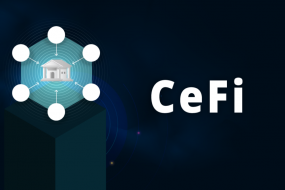
Web3 aims to revolutionize technology’s impact on human interaction, identity, community, and well-being. Web3 promises to transcend the limitations and harms of prevailing centralized systems by decentralizing power and aligning incentives with progress rather than profit. It gives users ownership, control, and agency over their digital lives, reshaping relationships between individuals, platforms, and society. The objective of this blog would be to analyze the potential impact of Web3 on social media.
The current state of social media, i.e., before Web3
Current social media platforms function as centralized servers controlling data, relationships, and user experience. Users give up personal information and consent to platform privacy policies in exchange for services. Platforms monetize user data and attention, not necessarily benefiting users or value creation.
Algorithms determine what content reaches users, shaping perspectives and influencing culture, politics, and well-being. However, algorithms are opaque, biased, and optimized for engagement over accuracy or well-being. Infrastructure encourages echo chambers. Misinformation spreads and addiction over meaningful connection or progress.
User data and intellectual property belong to platforms, not users contributing content or building value. Bans, censorship, and algorithm changes can instantly remove user presence, connections, thoughts, or livelihoods with no appeal. Good platforms and incentives for likes, hearts, shares, and metrics govern behavior over authentic expression or social good.
Web3 aims to decentralize this power and data back to users. By building on the blockchain, Web3 gives users ownership and control over their digital presence, identity, data, attention, relationships, and platforms. Content moderation and infrastructure incentive alignment become more transparent, fair, and optimized for well-being than profit and control.
Challenges of Web2 Social Media
Web2 social media platforms face significant challenges in monopolizing user data, attention, and experience. Centralized control enables manipulation, misinformation, and censorship with no accountability. Algorithms prioritize engagement over accuracy, amplifying outrage and polarization. They can ban users instantly, removing speech, community, and livelihood.
User data and content belong to platforms, not contributors. They monetize private information and influence shaping culture, politics, and well-being. Infrastructure encourages echo chambers, addiction, and viewpoints aligned with profitability.
There is a lack of transparency into how algorithms determine exposure and experience. Bias and unfairness insinuate as platforms determine what content and relationships define a user’s world. Manipulation threatens when platforms control engagement and dialogue. Users surrender agency to platforms in exchange for a connection.
Privacy and consent issues emerge from data collection for advertising targeting. Little prevents platforms from exploiting users for profit with no accountability or incentive to benefit society. Advertising models fundamentally influence content and experience, prioritizing clicks over truth or well-being.
Centralized control concentrates far too much power over discourse, identity, knowledge, community, and opportunity. Insufficient checks on this power leave room for censorship, misleading information, and unjust influence. Calls to regulate technology risk stifling innovation are also critical to progress. But unrestrained tech companies can undermine democracy, health, and fair society.
The potential of Web3 to revolutionize social media
Web3 aims decentralizing power and value in social media. Building on blockchain gives users ownership and control over their digital identity, data, attention, relationships, and platforms. Users maintain agency instead of surrendering to centralized companies or algorithms.
Content moderation and infrastructure incentive alignment become transparent, fair, and optimized for well-being. Value creation and exchange flow directly between users rather than through a profit-motivated intermediary. Meaningful connection and progress can be the focus once more.
Web3 enables actual data ownership, privacy, and interoperability. Users control their information, content, and relationships across different platforms and services. They can choose which platforms and tools benefit them based on priorities rather than available options.
Algorithms remain but follow transparent guidelines beneficial to users. They enhance rather than determine experience, emphasizing human judgment over rule-based sorting. Manipulation and censorship become harder as no single entity controls discourse or access.
Users can earn and exchange value for their attention and engagement in authentic, fair and optimized ways. Rather than exploiting users for profit, platforms facilitate value creation and direct exchange between users. Livelihoods become built on providing real value to other users, not just good algorithms and companies.
Comparison of Web3 with Web 2.0 and its limitations
Web2 platforms centralized power and value, giving users few choices and little control or ownership. They collected and exploited private data and attention to optimize profit over well-being. Manipulation and harm emerged from a lack of accountability and incentive misalignment.
Algorithms determine experience and discourse, controlling access to information and relationships. They shaped culture in opaque, biased, and manipulative ways with no appeal. Bans and censorship instantly removed users without consideration of speech, community, or livelihood.
User data, content, identity, and experience belonged to platforms, not individuals contributing value. Good companies and metrics governed behavior over authenticity. Users surrendered agency in exchange for access or influence over others.
In comparison, Web3 decentralizes power and aligns incentives for empowerment, ethics, and sustainability. It gives users ownership and control over their digital identity, data, voice, relationships, and platforms. Governance becomes distributed rather than concentrated.
Value creation and exchange flow between users directly, not through a profit-motivated middleman platform. Manipulation and exploitation become more challenging as no single entity controls access, moderation, data, or influence. Progress depends on providing real value to others, not just maximizing metrics-pleasing companies.
Web3 builds on the connection’s benefit while remedying the prevailing system’s limitations and harms. Its vision could revolutionize technology’s impact on individuals and society. But continued progress, not promises, will determine if this vision is realized. With determination and collaboration, Web3 can establish more ethical and sustainable innovation models.
The Promises of Web3 Social Media
Web3 aims to decentralize power and fulfill the promise of social media by empowering users, respecting privacy, and building trust. Some of the promises of Web3 social media are as follows-
Decentralization and user empowerment
Web3 gives users ownership, control, and agency over their digital identity, data, voice, relationships, and platforms. No single company or algorithm determines their experience and access. Users can choose which platforms benefit them based on priorities, not available options. They can build value by providing value to others, not just maximizing company metrics. Livelihoods depend on contribution, not exploitation.
Enhanced privacy and data ownership rights
Users maintain ownership and control of their personal information. They can choose how and if their data is collected, used, and shared across services. Data is portable, enabling true interoperability and choice. There are more robust incentives to limit data usage to what benefits users, not maximize profits.
Improved content moderation and trust mechanisms
Transparent, participatory governance shapes policies benefitting social good over profit. Well-being, not just growth, motivates decisions impacting discourse and experience. Manipulation and unjust exclusion become more complex through distributed power and aligned priorities.
Potential Impact of Web3 on Online Interactions
Web3 could fundamentally transform how people connect, engage, build value, and influence one another online.
Democratizing access and fostering inclusivity
Web3 dismantles barriers to access and participation in online communities and opportunities. No single company or algorithm controls experience or determines inclusion/exclusion. Diverse perspectives have equal power in shaping governance and discourse. Marginalized groups can build value and earn/exchange value on their terms rather than catering to platforms or algorithms, maximizing popularity over other priorities.
Monetization opportunities for creators and communities
Individuals and groups can monetize authentic value creation rather than selling data, attention, or access to popularity metrics. Fans and communities become the source of revenue and success rather than platforms controlling means of engagement, distribution, and influence. Creators form direct relationships with their audience, not channel them through a system incentivized to profit over sustainable value exchange.
Redefining social media Influencers and online reputation
Algorithms no longer control exposure, access, or aggregation of influence. Popularity depends on providing value, not just maximizing metrics, clicks, or shares. Creators build a reputation by cultivating genuine relationships with autonomy-minded, purpose-driven communities rather than optimizing for maximizing popularity on platform terms.
Web3 promises progress over-exploitation by putting people before profit and platforms. But its vision demands progress, not promises alone, to overcome the limitations of the prevailing system rather than enable them anew under different names.
Challenges and Considerations in Web3
While promising revolutionary change, Web3 faces significant hurdles that must be addressed through determined progress rather than empty promises.
User experience and scalability hurdles
Web3 aiming to decentralize at Web2 scales could make platforms complex, fragmented, and limiting user experience. Issues around ease of use, finding relevant content, or maintaining relationships across different services must be solved to appeal beyond early adopters. Scalability challenges involving blockchain, tokens, and distributed networks could bottleneck growth and mainstream adoption.
Adoption barriers and resistance from existing platforms
Incumbent companies have no incentive to support the decline of their business models and influence. They actively work to retain control over data, infrastructure, experience, and business models rather than empower users or society. Gaining mainstream adoption will require building despite potential obstruction from those with the most to lose.
Regulatory and legal implications
The legal status and regulation of platforms, tokens, decentralized networks, and apps raise many questions. Issues around securities laws, payments, privacy, content moderation, liability, and intellectual property could make Web3 development and adoption precarious if not addressed proactively. Regulations aim to protect consumers but often reflect the interests of established institutions, limiting rather than enabling innovation.
Balancing optimism for Web3’s vision with open-eyed recognition of the challenges involved is prudent. Continued progress is needed, not just proposals for how the world might differ if only existing limitations and obstacles were overcome.
Conclusion
The next generation of social media is being built before our eyes. Its impact on democracy, identity, community, and access awaits. But the kind of future it enables depends on how we choose to shape progress today. By exploring Web3’s vision, challenges, and possibilities, we build the knowledge and motivation to make choices aligning technology with humanity’s well-being and shared destiny rather than just profit or control alone. The future is unwritten.











